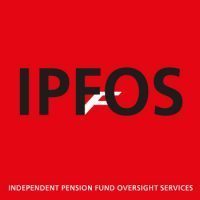TFS has developed a comprehensive, consistent and rigorous method of evaluating the full scope of pension fund Fiduciary Management, within limited timeframes. The essential purpose of our Audit process is to verify that the Fund’s responsibilities, relationships and tasks are being managed prudently and according to best practices and that Fund executives and board members have the tools and controls they need to deploy assets confidently.
In pursuing our approach, we divide Fiduciary Management into three primary areas of analysis: strategic services, asset management services, and accountability services. These three form the foundation of pension fund management and the focus of our evaluation.
We then divide the three primary building blocks into nine key processes – the main channels through which services flow and for which control points and risk factors must be evaluated.
In turn, we break those key processes down into the discreet tasks and deliverables carried out by the various fiduciary managers – a minimum of 100 activities.
In a single picture, the process looks like this:
By investigating the quality, risk factors and control features of all those activities, TFS produces a comprehensive, concise and independent assessment of a fund’s full fiduciary management picture: is it robust and likely to lead to the results required? Have fund executives and board members covered their responsibilities?
The Audit includes interviews with executives and staff holding direct responsibility for specific tasks and relationships, as well as in-depth discussions with members of the pension fund’s management board. The fund’s governance structure comes under particular scrutiny as does the efficacy of service level agreements with fiduciary managers and other service providers. An important aspect of the Audit process is evaluating the range of responsibilities and expectations held by stakeholders. This analysis helps fund executives and board members account for the broader issues inherent in their duties.
This disciplined method helps board members identify critical control points, excess or unrewarded risk issues and any holes in the fund’s structure or practices. It goes far beyond a simple evaluation of issues like fund yields and whether or not “alpha” has been achieved.
TFS asks basic questions about why the assets have been entrusted to the fund in first place, and how they can be best deployed to meet the covered group’s liabilities. And, sees to it that board members have the answers to those fundamental questions, and more.
Once a comprehensive picture of the total Fiduciary Management situation has been formed, the board can move quickly to set priorities for remediation and begin to address specific problems or weaknesses, an effort in which TFS can be of assistance.

